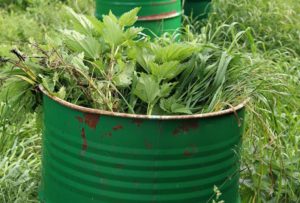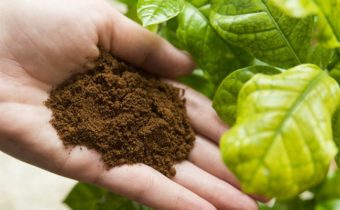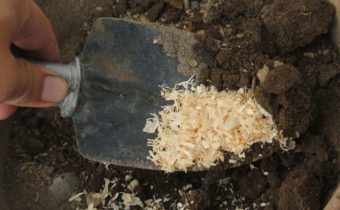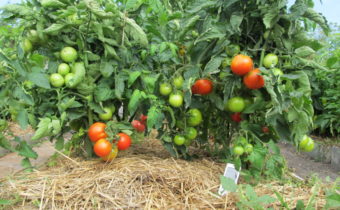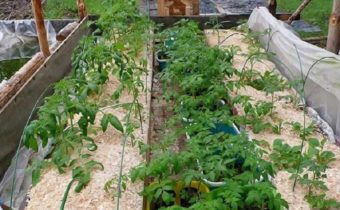Fertilizers from sawdust for tomatoes
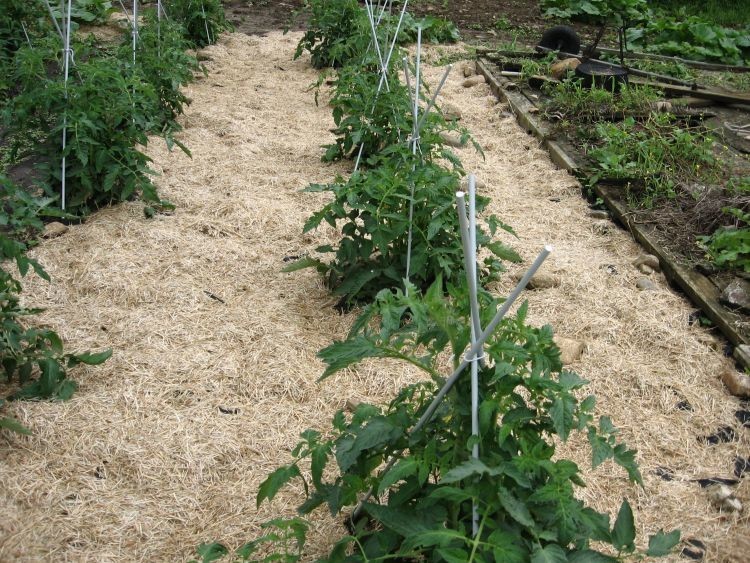
It is not difficult to make a useful fertilizer for tomatoes from sawdust, but it can also cause considerable damage to planting if it is applied on inappropriate soils or wrong cook. Sawdust, especially fresh, have a pronounced ability to change the indicators of the soil, and in some cases this effect goes against the needs of tomatoes.
Beneficial features
 Despite the fact that wood chips do not saturate the soil with nutrients, the introduction of waste into the soil on which tomatoes grow will have a beneficial effect on the growth and yield of planting. The effect is achieved by improving the quality of the soil:
Despite the fact that wood chips do not saturate the soil with nutrients, the introduction of waste into the soil on which tomatoes grow will have a beneficial effect on the growth and yield of planting. The effect is achieved by improving the quality of the soil:
- Improved structure. Tomatoes prefer light, aerated soils permeable to water. Sawdust is a safe organic baking powder, the use of which is justified primarily on dense clay soils and loams.
- Oxidation of alkaline soils. The optimum acidity for growing tomatoes is in the range of pH 6.0 - 7.0 (slightly acid and neutral). If the pH is greater than or equal to 8, the soil must be acidified. The introduction of sawdust for several years allows you to bring this figure to normal.
- Warming the soil. The soil in which the compost was filled with sawdust warms up faster in the spring, because the wood stimulates the processes of decay. This feature of the raw material is primarily relevant when growing tomatoes in the greenhouse.
- Stimulation of microflora development. Due to the more active composting of the compost into the soil, beneficial microorganisms and earthworms will be intensively populated, increasing its quality in the course of its vital activity.
Raw material selection
Not all types of wood chips are equally beneficial for tomatoes. The most suitable raw materials:
- Pereparevshie. In the process of decaying sawdust consumes a large amount of nitrogen, which is required by microorganisms for the decomposition of wood. Filling the soil with fresh and even partially rotted raw materials may cause an element deficiency in tomatoes. Fresh sawdust has a stronger oxidizing effect. Using raw materials, you need to take into account the initial indicators of the soil. Undesirable oxidation can be corrected by simultaneously adding chalk, dolomite flour or lime to the soil.
Pereprevshie sawdust different dark brown color and soft structure. A complete cycle of decay of raw materials takes about 5-10 years. Sawdust of deciduous trees perepravayut slower than coniferous chips.
- Hardwood. Coniferous wood waste not only more intensively oxidizes the soil and impoverishes it with nitrogen, compared with shavings from deciduous trees, but also contains a high concentration of resins and active substances that can be harmful to plants. On beds with tomatoes, it is allowed to use only completely rotted conifer sawdust, necessarily mixing the raw material with liming substances for the soil.
- Small in size. The smaller the particles of the disintegrant, the better the soil structure will be. In addition, small pieces are interrupted faster, because they are better wetted with water, which is the main condition for rotting wood.
Fertilizer from sawdust for tomatoes
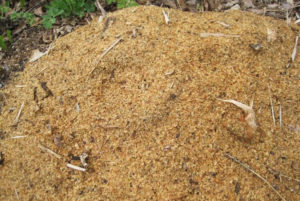 It is optimal to make sawdust in the fall at the same time as digging the soil. It is recommended to embed into the ground completely rotten raw materials. Fresh or half-rotten sawdust is acceptable to make, only if you want to lead to a normal alkaline soil. Young chips can reduce the pH of the soil by 2-3 points, partially overheated - by 1-2, but this requires regular fertilization of the soil for 3-5 years.
It is optimal to make sawdust in the fall at the same time as digging the soil. It is recommended to embed into the ground completely rotten raw materials. Fresh or half-rotten sawdust is acceptable to make, only if you want to lead to a normal alkaline soil. Young chips can reduce the pH of the soil by 2-3 points, partially overheated - by 1-2, but this requires regular fertilization of the soil for 3-5 years.
Sawdust ripen faster if you lay them in compost and moisturize it plentifully. At the same time, the chips will have a beneficial effect on the quality of the vegetable or manure compost, speeding up its processing.
Fertilizer recipes
Depending on the raw materials, goals and capabilities of the gardener, fertilizer can be prepared from sawdust in several ways:
- Sawdust. If a completely raw material is available, it is sufficient to mix it with rotted manure or compost and put it into the soil. The mixture should be in a ratio of 1: 1. Cow dung can be replaced with chicken droppings, in this case you need 2 parts of sawdust for 1 part of litter. Fertilizer can be applied during spring digging, spending 10-12 kg per 1 m2.
- Fresh chips. If the soil indicators allow the use of young wood, the raw materials should be mixed in the same proportion with freshly cut grass, fresh leaves or tops (but not with fresh manure!). This is necessary so that the soil does not lose its nitrogen reserves during the processing of wood. Fertilizer is allowed to be embedded in the ground only in autumn.
- Partially rotted. In this case, it is recommended to combine sawdust with mineral dressing and deoxidizing agents in order to level possible harm. Sawdust should be soaked with a solution of ammonium nitrate (40 g per 10 kg of raw material is required) and left to mature for 1-2 months. Before making it, add lime to the mix (120 g per 10 kg). To fertilize a tomato bed for 1 m2 it will take 30 kg of fertilizer.
- Compost from manure. Wood chips should be mixed with manure and freshly cut grass in a ratio of 4: 1: 2. The resulting mass is filled with water (3: 1) with the addition of humates. Food waste (meat and fish) can be added to the mixture, but in a volume of not more than 1/10 of the mass of the compost. On 1 m2 you need 25-30 kg of top dressing.
The "younger" sawdust, the fresher the manure in the compost should be. Partly fine chips can be mixed with used fertilizer. The fact is that the processing of fresh raw materials requires more nitrogen, which in this mixture provides cow manure.
- Vegetable compost. Sawdust should be mixed with compost plant residues from the vegetable garden and vegetable peelings in a 2: 1 ratio. In every 30 kg of raw material you need to add 1 kg of wood ash and pour 5 liters of 5% urea solution. After rotting the compost can be embedded in the soil at the rate of 10-12 kg per 1 m2.
Tips for cooking compost with sawdust
Adding sawdust to compost requires some adjustments to the usual humus care:
- To re-wood shavings, it is important that the raw materials are moist. Therefore, it is necessary to regularly destroy the dense crust that forms on the surface of the compost and water it.
- In the compost pile it is useful to add ordinary garden soil (3 buckets per ton of compost). The activity of microorganisms and earthworms will accelerate the decomposition of sawdust.
- It is advisable to mix the maturing compost frequently, optimally every 1-2 months.
Evaluating sawdust as a fertilizer for tomatoes, it should be noted their naturalness, low cost, high efficiency on heavy soils. The disadvantages include the need for long preparation of raw materials, the selection of wood waste, the lack of nutritional properties of fertilizer.

